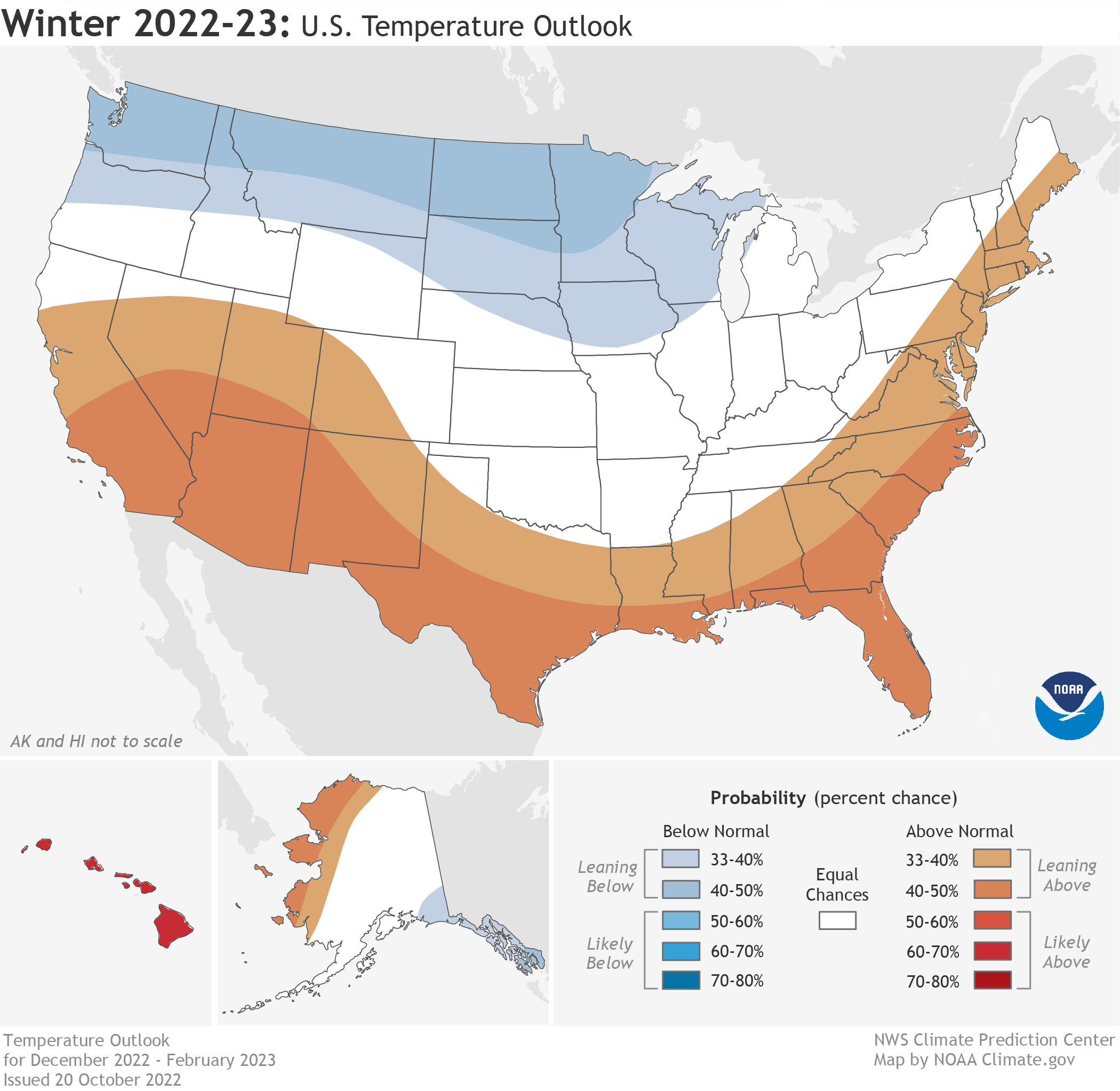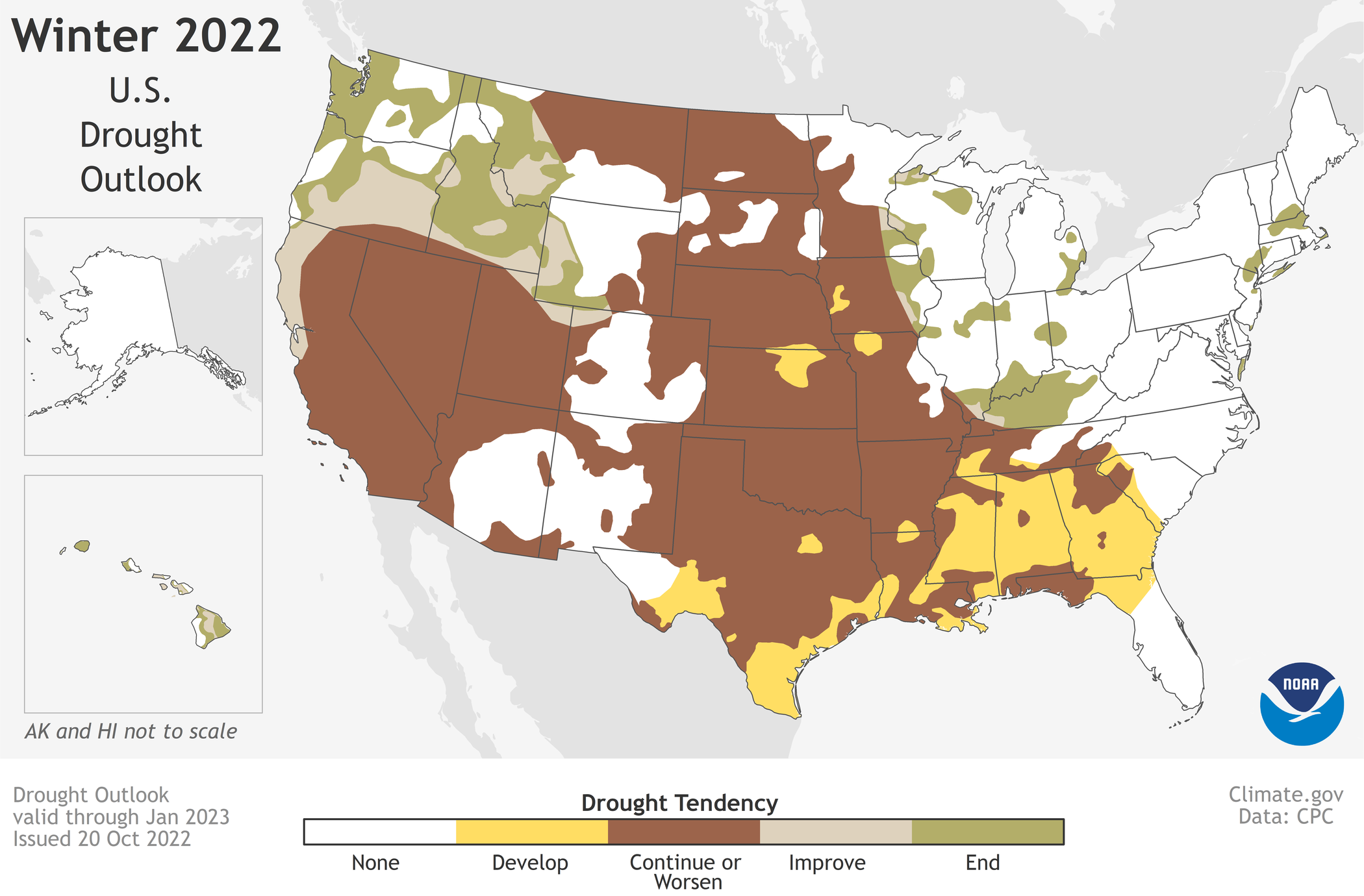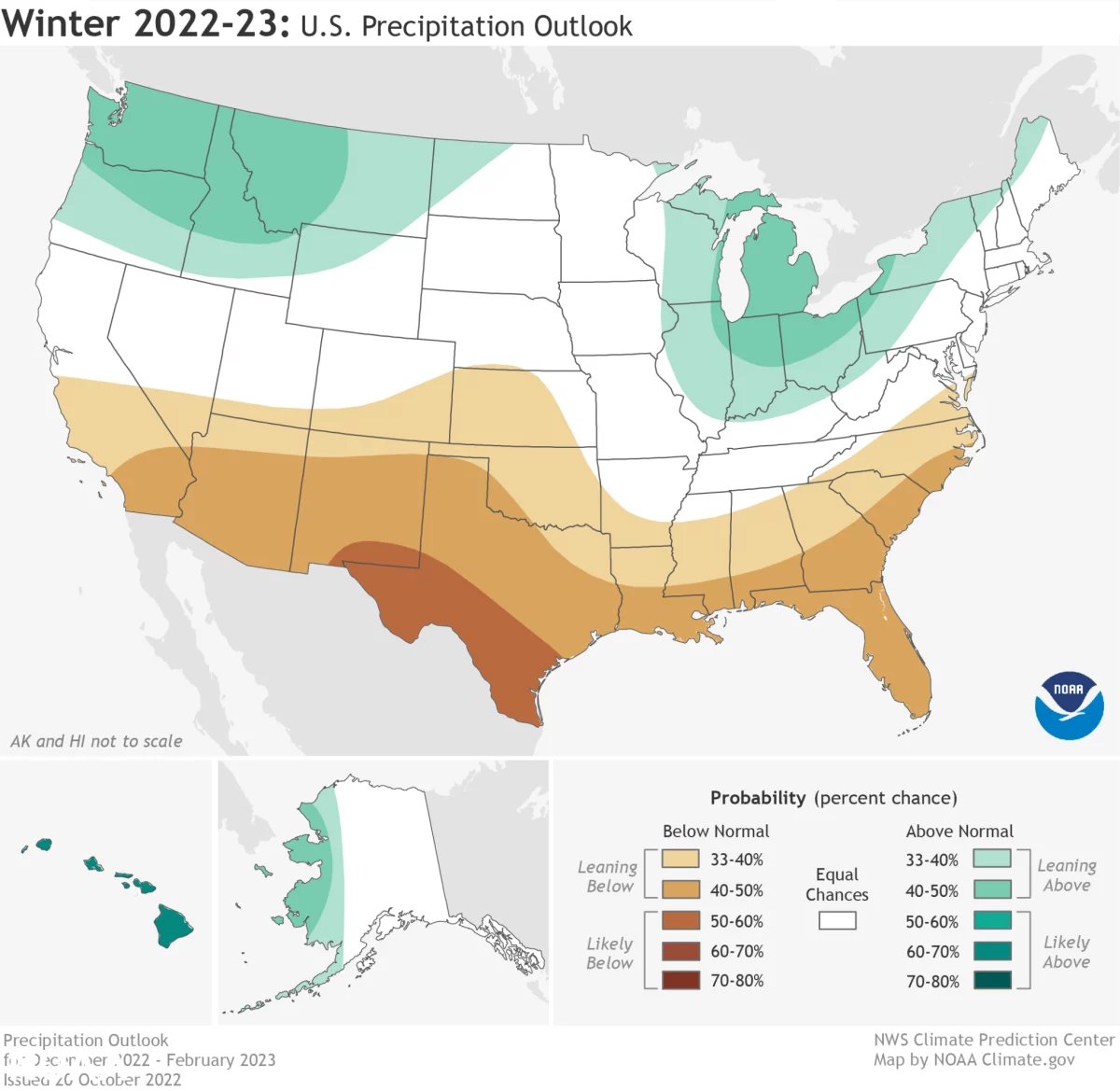This article was published on: 10/20/22 11:54 AM
This year La Niña returns for the third consecutive winter, and starting in December 2022 through February 2023, NOAA predicts drier-than-average conditions across the South with wetter-than-average conditions for areas of the Ohio Valley, Great Lakes, northern Rockies and Pacific Northwest, according to NOAA’s U.S. Winter Outlook released today by the Climate Prediction Center — a division of the National Weather Service.
NOAA predicts warmer-than-average temperatures for the Southwest and along the Gulf Coast and eastern seaboard.
NOAA forecasters, in collaboration with the National Integrated Drought Information System, continue to monitor extreme, ongoing drought conditions that have persisted in the Western U.S. since late 2020, as well as parts of the central U.S. where historic low-water conditions are currently present.
“Drought conditions are now present across approximately 59% of the country, but parts of the Western U.S and southern Great Plains will continue to be the hardest hit this winter,” said Jon Gottschalck, chief, Operational Prediction Branch, NOAA’s Climate Prediction Center. “With the La Niña climate pattern still in place, drought conditions may also expand to the Gulf Coast.”
Temperature
–The greatest chance for warmer-than-average conditions are in western Alaska, and the Central Great Basin and Southwest extending through the Southern Plains.
–Warmer-than-average temperatures are also favored in the Southeastern U.S. and along the Atlantic coast.
–Below-normal temperatures are favored from the Pacific Northwest eastward to the western Great Lakes and the Alaska Panhandle.

Precipitation
–Wetter-than-average conditions are most likely in western Alaska, the Pacific Northwest, northern Rockies, Great Lakes and Ohio Valley.
–The greatest chances for drier-than-average conditions are forecast in portions of California, the Southwest, the southern Rockies, southern Plains, Gulf Coast and much of the Southeast.
–The remainder of the U.S. falls into the category of equal chances for below-, near- or above-average seasonal total precipitation.
Drought
–Widespread extreme drought continues to persist across much of the West, the Great Basin, and the central-to-southern Great Plains.
–Drought is expected to impact the middle and lower Mississippi Valley this winter.
–Drought development is expected to occur across the South-central and Southeastern U.S., while drought conditions are expected to improve across the Northwestern U.S. over the coming months.

NOAA’s seasonal outlooks provide the likelihood that temperatures and total precipitation amounts will be above-, near- or below-average, and how drought conditions are anticipated to change in the months ahead. The outlook does not project seasonal snowfall accumulations as snow forecasts are generally not predictable more than a week in advance.
NOAA’s Climate Prediction Center updates the three-month outlook each month. The next update will be available November 17.




